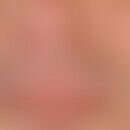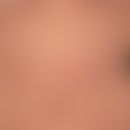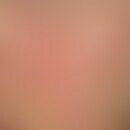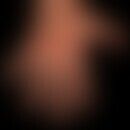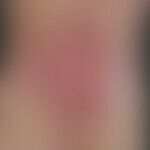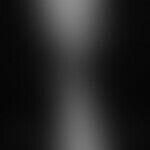Synonym(s)
Epidermolysis bullosa dystrophica inverse type; Inverse epidermolysis bullosa dystrophica; REBD-I
HistoryThis section has been translated automatically.
Gedde-Dahl, 1971
DefinitionThis section has been translated automatically.
Autosomal recessive inherited scarring epidermolysis.
You might also be interested in
EtiopathogenesisThis section has been translated automatically.
Homozygous or "compound" heterozygous COL7A1 mutation mapped on gene locus 3p21.3 The mutation leads to reduction or lack of synthesis of collagen type VII.
ClinicThis section has been translated automatically.
Integument: Blistering especially in the axillae and groin, flanks, neck, upper arms and thighs, and anogenital region. Formation of extensive, poorly healing erosions. Frequent nail dystrophies, enamel hypoplasia, and mucosal involvement possibly with scarring stenosis.
Extracutaneous manifestations: Dysphagia with esophageal involvement.
HistologyThis section has been translated automatically.
Bubble formation below the lamina densa.
Electron microscopy: Abnormal structure of the anchoring fibrils in the electron microscope.
Differential diagnosisThis section has been translated automatically.
Other forms of the Epidermolysis bullosa group.
TherapyThis section has been translated automatically.
Avoidance of mechanical irritation and pressure points on the skin as well as regular restoration of the teeth or treatment of the oral mucosa by dentists.
External therapyThis section has been translated automatically.
Mild antiseptic soaps, sitz baths with antiseptic and astringent additives such as quinosol sulphate (e.g. Chinosol 1:1000) for wounds in the perianal and inguinal area. Wounds and granulation-promoting external preparations (e.g. Iruxol N ointment), see below Wound treatment. In case of pronounced inflammation, creams or pastes containing glucocorticoids for a short time.
Internal therapyThis section has been translated automatically.
Therapy trial with collagenase inhibitors such as phenytoin (e.g. Zentropil, Epanutin) Initial dosage: 2-3 mg/kg bw/day in 2 ED over 10-14 days, followed by a gradual dose increase up to a blood level of at least 8 μg/ml. Effectiveness can only be assessed after 6 months. Trial with vitamin E therapy (e.g. Evit Kps.) 25 mg/kg bw/day in infants and 600-1200 mg/kg bw/day in adults.
Progression/forecastThis section has been translated automatically.
Intermittent course with possible longer remissions.
Diet/life habitsThis section has been translated automatically.
Diet rich in vitamins and minerals.
LiteratureThis section has been translated automatically.
- Abeck D et al (1991) Epidermolysis bullosa dystrophica inversa Gedde-Dahl. Act Dermatol 17: 35-38
- Gardella R et al (2002) Genotype-phenotype correlation in italian patients with dystrophic epidermolysis bullosa. J Invest Dermatol 119: 1456-1462
- Gedde-Dahl T Jr (1971) Epidermolysis Bullosa: A Clinical, Genetic and Epidemiological Study. Johns Hopkins Press (Baltimore): 117-119
- Kahofer P et al (2003) Dystrophic epidermolysis bullosa inversa with COL7A1 mutations and absence of GDA-J/F3 protein. Pediatric dermatol 20: 243-248
Incoming links (1)
Matrix metalloproteinases;Outgoing links (7)
Cream; Epidermolysis bullosa hereditaria (overview); Erosion; Glucorticosteroids topical; Paste; Phenytoin; Wound treatment;Disclaimer
Please ask your physician for a reliable diagnosis. This website is only meant as a reference.
